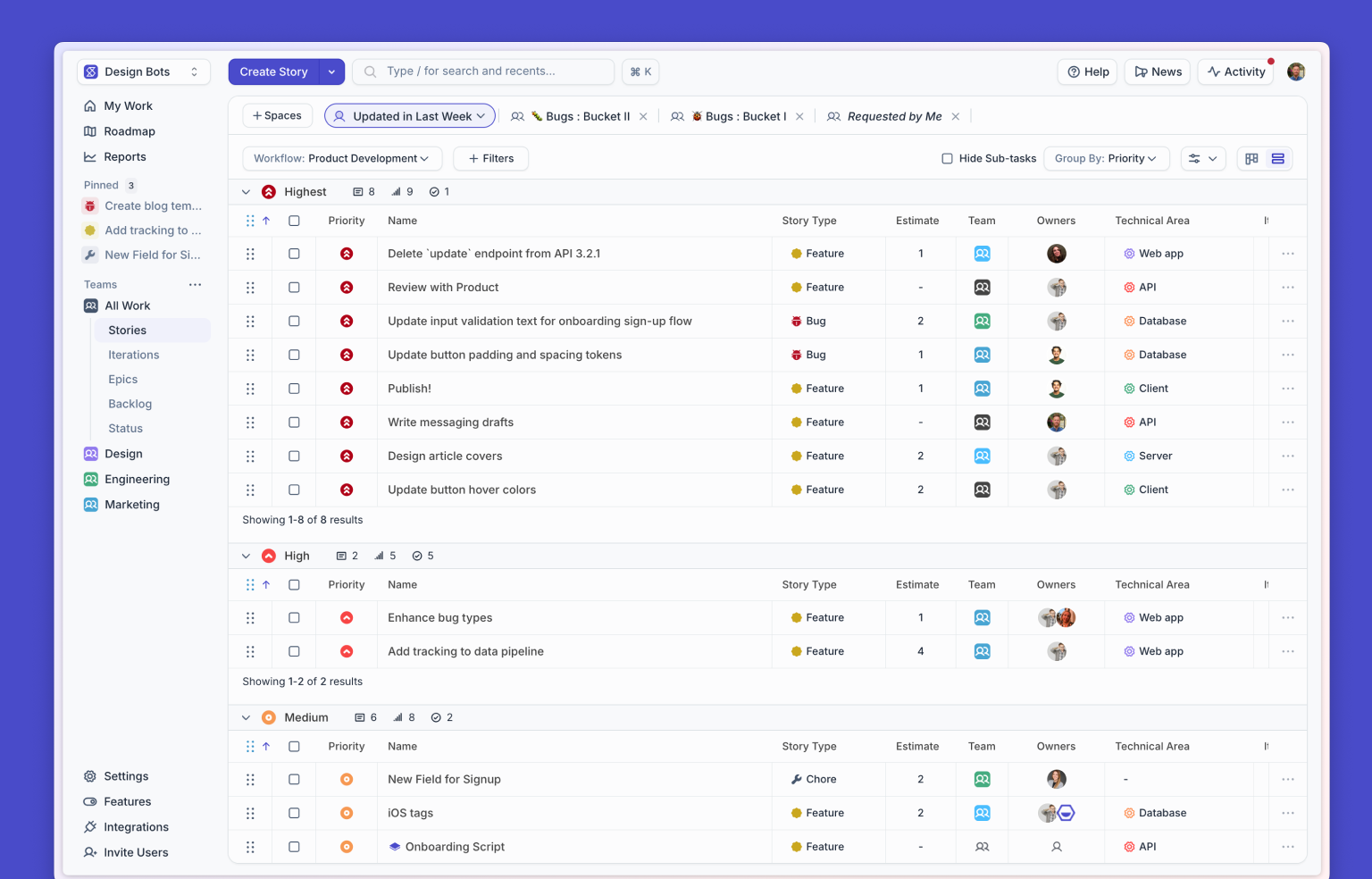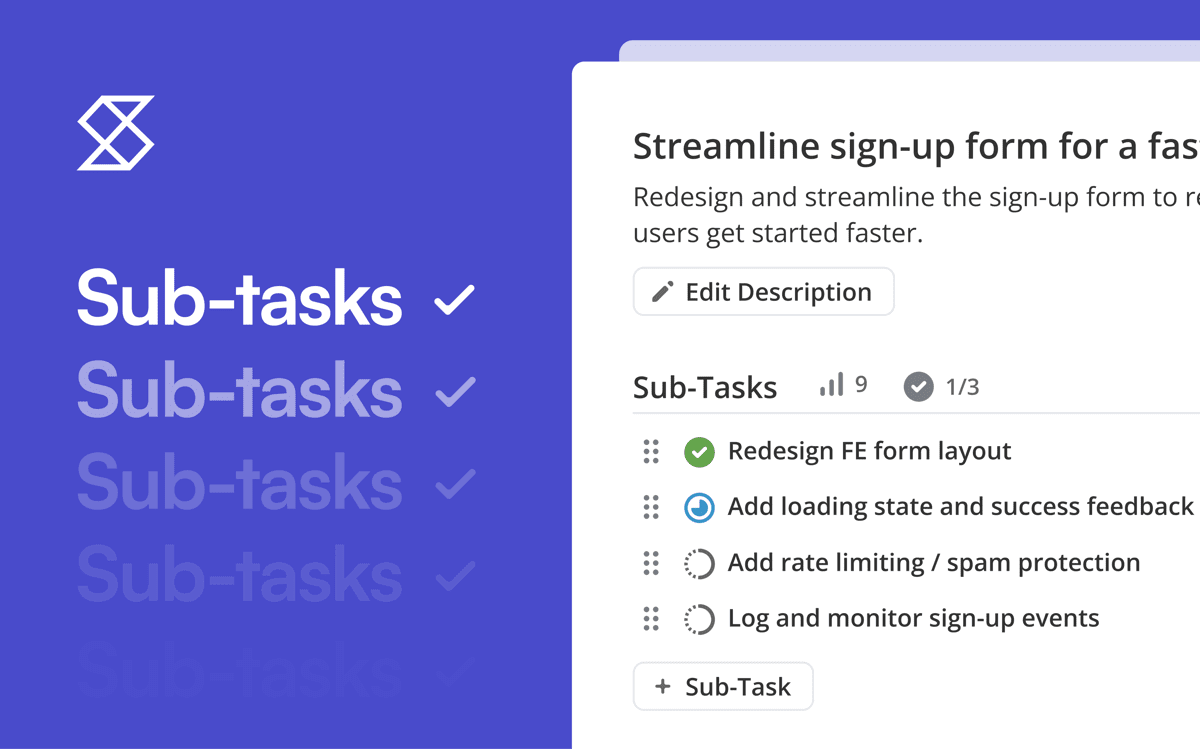The Cycle Time and Lead Time Chart are now available in Shortcut to provide your company with data that can help you plan and allocate resources more effectively. Historical data is critical to smart decision-making and effective planning. As Maya Angelou said, "If you don't know where you've come from, you don't know where you're going."
Get visibility into performance and progress across teams and departments
Use this chart to gain insight into how much time and human power it takes to complete different types of Stories in Shortcut. Toggle between Cycle Time and Lead Time, depending on what you'd like to see.
- The Cycle Time Chart shows how long it takes a Story to be completed after it's started.
- The Lead Time Chart shows the amount of time that passed between when a Story is created and when it's completed.
Each Cycle Time and Lead Time chart can be filtered by Story Type (Bug, Feature & Chore). You can change the scale of the chart between Log and Linear. Utilize the Log (or Logarithmic) Scale when you want to see everything and want to look at the outliers, and use the Linear option when you want an accurate sense of scale.
And new for April 2021 you can customize Starting and Ending Workflow States to select which ones you'd like to measure progress between.

NEW, APRIL 2021: Select different start and end Workflow States
Tailoring these metrics will help you make more data-driven decisions while drilling down to specific areas in need of optimization. That is a fancy way of saying that you can change the start and end Workflow States to see your cycle and lead times between different stages of your team's development process.

See Cycle and Lead time across different dimensions
View Lead and Cycle Time Reports on:
- The Reports Page
- The Milestone Detail Page
- The Epic Detail Page
- The Iteration Detail Page
- The Project Detail Page
Plan with the Cycle Time Chart
The Cycle Time Report can tell you, on average, how long it takes to complete certain types of Stories. You can leverage this report to identify the types of Stories that take longer than others to complete so you can investigate further, or invest more resources in certain areas.
Optimize workflow with the Lead Time Chart
The Lead Time Report can provide insights into how long it takes a Story to be completed from its inception. It can help identify if there is a significant lag time between when a Story is created and before it gets worked on.
Quickly spot and investigate outliers
Each dot on the chart represents an individual Story that was completed on that day. Roll over each dot to see the title of the Story and the number of days it took to complete it. If you're investigating an outlier, you can scroll over its dot and click to reveal the Story dialog for easy access to the additional context.

See how work is progressing at a glance
The green dotted line shows your average Cycle Time. The solid line shows the 7 day trailing average, which gives your team a continually updated look at how much progress is happening over time. The trailing average does not calculate the average over the last seven consecutive days, rather the last seven days of available data.

Tips for making the Cycle and Lead Time Chart work for your team
- Maintain Story Hygiene: The more defined your process is for moving Stories to completed, the more accurate your data will be.
- Filter on the Reports Page: Use these filters to drill into more targeted Cycle Time & Lead Time reporting around Dates, Iterations, Projects, Epics, Milestone, and Labels.
- Note the Trailing Average: This will be the most insightful if you look at longer time periods.
- Calculate how long Stories sit in an Unstarted State: Subtract Lead Time from Cycle Time.
Hopefully, you find the Cycle and Lead Time Chart helpful! If you have questions about putting them to use, go to help.clubhouse.io. We're here to help. And also to project manage. But mostly to help.














.avif)


%20(788%20x%20492%20px)%20(1).png)
.png)

